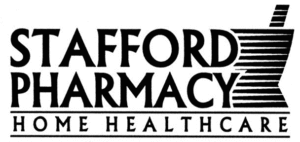Reading our previous post , you have to appreciate that “those were the days”! Pharmacists’ working in the apothecary, surrounded by wooden counters and drawers filled with all manner of ingredients – some powders, some dried herbs, the occasional item the origin of which only the pharmacist knew for sure. Although it has been rumored that the secret ingredient was anything we would expect today. After all, at least one common “soda pop” which beget a love affair with North American culture with it’s secret ingredient, cocaine which has since been removed, but no wonder “things go great”, when drinking a bottle. So, who knows what ingredients made their way into the medicines of the last couple of centuries, even under the knowledgeable supervision of the pharmacist.
That was then of course, what with the introduction of commercially available drugs in every dosage form imaginable, the role of the pharmacist changed as did the relationships with the patients. In many ways, this was a good thing because it now allowed the pharmacist the time to focus more on the use of the medication rather than the preparation and for that matter, sometimes the collection of medicines.
Think of us now as therapeutic problem solvers! We view our patient holistically and not just with a focus on the drug or even just on the drug therapy. Pharmacists have to consider the patient’s medical history; their current health status; previous drug therapy responses as well as drug adverse reactions and true allergies. Although the prescription, still remains that same legal document that communicates the prescriber’s choice of drug therapy, it isn’t always the final word with respect to that drug choice. It is often an invitation to counsel, patient and/or prescriber, on the best treatment strategy. At a minimum, the pharmacist has the legal obligation to verify that the drug therapy chosen is appropriate; the dosing is accurate; the dosage form best for the patient; that there are no interactions with other medications being taken; that the patient is not allergic to the medication; and that there are no contraindications due to disease-drug interactions. These are just a few of the knowledge-based, critical assessments that go on with every prescription presented to the pharmacist.
Of course there has been no mention of the decision-making that goes on as a result of drug therapy costs; the product and economic decision making required of the pharmacist when the patient introduces drug coverage, be that private or government sponsored. That opens a whole new list of responsibilities, calculations, brand vs generic decisions, benefits list determinations, co-pays, deductibles and the list goes on.
Mind numbing isn’t it? The prescription, the written or verbal order given by a practitioner; that sets in motion a list of activities – decisions – assessments – calculations and all focused on ensuring that the patient receives the very best benefits from the drug therapy and that the risks, are minimized. That describes to some extent, what a pharmacist might do today, in the year 2011.


